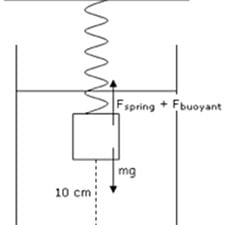If you’re preparing for the Medical College Admission Test® (MCAT®),you will want to consult the experts. These selections from Kaplan’s MCAT Question of the Day series can help you sharpen your skills as you prepare to begin your potential journey into medical training.
The questions below come from three of the four MCAT sections—biological and biochemical foundations of living systems; chemical and physical foundations of biological systems; and psychological, social, and biological foundations of behavior. A fourth section, critical analysis and reasoning skills (commonly referred to as CARS), is based largely on inference.
Medicine can be a career that is both challenging and highly rewarding but figuring out a medical school’s prerequisites and navigating the application process can be a challenge unto itself. For students preparing for medical school, the AMA pre-med glossary guide has the answers to frequently asked questions.
For those already in medical school, the AMA and Kaplan have teamed up to support you in reaching your goal of passing the USMLE® or COMLEX-USA®. If you're looking for additional resources, Kaplan provides free access to tools for pre-clinical studies, including Kaplan’s Lecture Notes series, Integrated Vignettes, Shelf Prep and more.
Section: Biological and biochemical foundations of living systems
Question: Trypsin cleaves at the carboxyl end of lysine and arginine, except when either is followed by proline. How many oligopeptides would be formed in the enzymatic cleavage of the following molecule with trypsin? VFEKYFWIKPRGA
A. 0
B. 1
C. 2
D. 3
The correct answer is D.
Kaplan explains why: Trypsin cleaves at the carboxyl end of lysine (K) and arginine (R), except when either is followed by proline (P). A cleavage at the carboxyl end indicates that the peptide bond is hydrolyzed after the indicated amino acid. The peptides formed after trypsin digestion are: VFEK YFWIKPR GA. Since three peptides are the product of the digestion, choice D is correct. Notice that the second lysine in sequence will not serve as a cleavage site since proline immediately follows.
Section: Chemical and physical foundations of biological systems
Question: An object of density 2 g/cm3 is attached to the end of a vertical spring and allowed to sink into a container filled with a liquid of density 1.2 g/cm3. Equilibrium is reached when the mass is 10 cm from the bottom of the container. Which of the following best describes what happens if this liquid is replaced by a liquid of density 1.5 g/cm3 with all else remaining fixed?
A. The spring compresses because the buoyant force increases.
B. The spring stretches because the buoyant force decreases.
C. The spring stretches because the buoyant force increases.
D. The length of the spring remains unchanged.
The correct answer is A.
Kaplan explains why: First, notice that the mass is initially in equilibrium, which means that the downward force of gravity is balanced by the sum of the upward buoyant force and the upward force of the spring on the mass.
Increasing the density of the liquid means increasing the upward buoyant force: the volume of the fluid displaced is the same (the volume of the object), but since the new fluid is denser, this displaced volume would have a higher mass and thus weigh more. This will temporarily result in a greater net upward force than downward force since the spring is assumed to have the length that produced equilibrium in the first liquid. The result thus is the compression of the spring.
From the answer choices we see that only choice A matches our explanation.
(B) Distortion. The upward buoyant force in this example increases. If the upward buoyant force increases, this would move the object upward and thus compress the spring. (C) Distortion. If the upward buoyant force increases, this would move the object upward and thus compress the spring. (D) Distortion. The density of the liquid does have an effect on the object's buoyancy. Based on this, we know that the length of the spring will not remain constant.
Section: Psychological, social and biological foundations of behavior
Question: Which of the following observations would be evidence of a potential neurological disease?
A. A 2-month-old infant responds to sudden movement of his head by throwing out his arms, then gradually retracting them while crying.
B. A teenage female patient fails to extend her big toe and fan her other toes in response to a gentle stimulus along the sole of her foot.
C. An fMRI shows that a patient's visual processing is contralateral, while auditory processing is done ipsilaterally.
D. A 67-year-old male patient responds to an object being placed in his palm by reflexively closing his fingers around the object.
The correct answer is D.
Kaplan explains why: The question asks for an observation that indicates an abnormal response. The Moro reflex, described in choice A, is appropriate for a 2-month-old infant. A lack of the primitive Babinski reflex in a teenager, as shown in choice B, again would be normal as primitive reflexes are expected to fade with age.
Choice C discusses where the sensory processing happens, and correctly notes that visual processing is contralateral while auditory processing happens on the same side as the sensory input (ipsilateral processing). The correct answer, then, is choice D, as this shows the return of the primitive grasping reflex in an adult, which can be a sign of neurological conditions.




